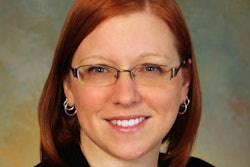Dear AuntMinnie Member,
A new report published today in the Journal of the American Medical Association is pointing the finger at medical imaging as a contributor to high medical costs in the U.S.
Researchers from Harvard University examined why the U.S. spends so much more on healthcare as a percentage of gross domestic product than other nations, while at the same time falling short on generally accepted measures of population health such as life expectancy and infant mortality.
Their analysis mentioned a number of factors, but medical imaging was specifically cited as a possible contributor. The researchers found that the U.S. had both higher utilization of imaging and a larger installed base of scanners as a percentage of population than other comparable countries.
What do the findings mean in the debate over healthcare costs? They definitely put pressure on radiology professionals to be prepared to defend the value of imaging. Learn more by clicking here, or visit our Imaging Leaders Community at leaders.auntminnie.com.
10.5T MRI scanner fires up
You've heard of 3-tesla MRI and even 7-tesla MRI, but how about 10.5-tesla MRI? Researchers in Minnesota have begun performing the first scans on humans with this powerful new magnet, according to an article in our MRI Community.
The system has been installed at the Center for Magnetic Resonance Research at the University of Minnesota and will be used for research, primarily for neurological uses. Learn more about the system by clicking here.
In other MRI news, the U.S. Food and Drug Administration this week issued a warning to healthcare providers about possible artifacts that could develop in MR angiography scans of patients with stainless steel neurovascular embolization coils. Learn more by clicking here, or visit our MRI Community at mri.auntminnie.com.
PET beats SPECT for CAD
Finally, visit our Molecular Imaging Community for new articles from the just-concluded American College of Cardiology meeting in Orlando, FL. Check out this article on how PET beat SPECT for detecting severe obstructive coronary artery disease (CAD), or this article on the use of PET/CT scans to measure coronary calcium during stress tests.



















